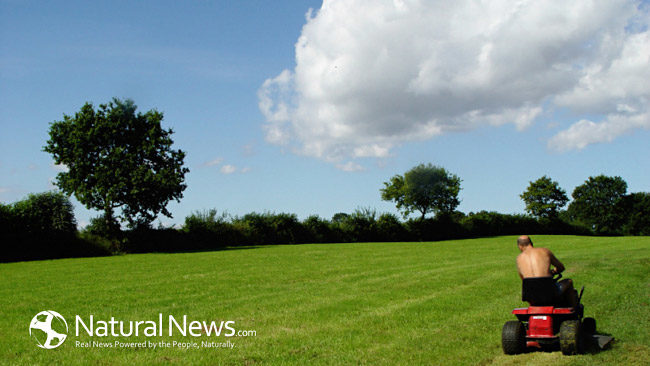We’ve all heard about the environmentally friendly landscaping method that requires little to no supplemental water: xeriscaping. Or, as my nephew calls it, zero-scaping. While it’s especially popular in arid climates where the water crisis is a daily reality, the principles of xeriscaping can be applied anywhere.
In this light, a strange occurrence has begun in some regions of the country: the traditional grass lawn is becoming a symbol of waste.
It doesn’t need to be that way. Maybe you rent. Maybe you just like a little patch of green to sit in. Don’t worry, there are ways to have a grassy yard without incurring the wrath of conservationists everywhere.
Plant Clover
Sometime in the last 50 years, clover has fallen into the ‘weed’ category. No one is really quite sure how it happened, or why for that matter, other than because herbicides kill clover and the chemical production companies aren’t fond of its natural properties. It’s your classic corporate lightbulb conspiracy, just a bit more planty. Clover eliminates the need for fertilizers and herbicides. It naturally crowds out broadleaf weeds like dandelions, nourishes honeybees, resists drought, and naturally converts nitrogen into fertilizer using bacteria in its root system. It’s a super plant.
Kick the Lawn Bag
Another way to greenify your grass lawn is to stop collecting the clippings when you mow. Returning grass clippings to the lawn is actually good for growth. It even has a catchy name: Grasscycling. Grasscycling nourishes the grass naturally – think about it, when you mow, “you’re cutting off any new seed-heads that might be forming, so you’re preventing the grass from reproducing.” By leaving the clippings in the yard, you’re not only returning any seed heads to the soil, you’re aiding the decomposition process of what would otherwise be waste. Yard clippings otherwise end up in a landfill. Now that’s wasteful.
Don’t Overwater
It can be tempting to overwater. Psychologically it feels like extra water should help cultivate a lush, green lawn – cue rainforest soundtrack – but that’s not the case at all.
In fact, watering too frequently, especially in humid climates, promotes unwanted growths like dollar weed and sedge. Mixed in with these weeds, a shallowly watered grassroot will likely stay near the top of the soil and be more susceptible to damage.
One surefire way to avoid over-watering is to start collecting your own rainwater. It suddenly becomes a revered substance; funny how quickly liquid becomes gold. There are all sorts of methods for collecting rainwater, but it essentially all starts with a bucket.
Go Native
Let’s step away from the lawn for a moment and look at the rest of the yard. You can conserve resources by growing native plants in flower beds and planters. Foliage that grows naturally in a region is far simpler to cultivate and maintain. Native plant species have had thousands of years to adapt to the local environment, so you’re generally set in the hardiness department. If you’re not buying it, try planting a palm tree in Saskatchewan. For a list of plants local to your region, check out this Native Plant Finder.
Go Goat
I’d love to be the one to say that you could borrow a goat to to trim the lawn instead of using a loud, smelly lawnmower. Unfortunately that’s not how goats work. They can’t be instructed to eat grass blades to ⅔ their starting height, or really expected to eat cut grass much at all. Goats are foragers, skilled at eating through overgrown brush and tall greens, more like living weedwhackers than lawnmowers. When the circumstances are right though, there’s nothing like a goat for vegetation control. And let’s be honest, you’d quickly become the most popular house in the neighborhood.
Growing an eco-friendly yard is as much about what you don’t do as what you do. So go ahead, don’t overwater, don’t plant crazy plants for your climate, and don’t grow through the extra hassle of tossing out yard clippings. The earth will thank you.
Bio: Katie Kapro holds her MFA in Nonfiction Writing. She is presently working on reclaiming her desk from an aggressive asparagus fern.





